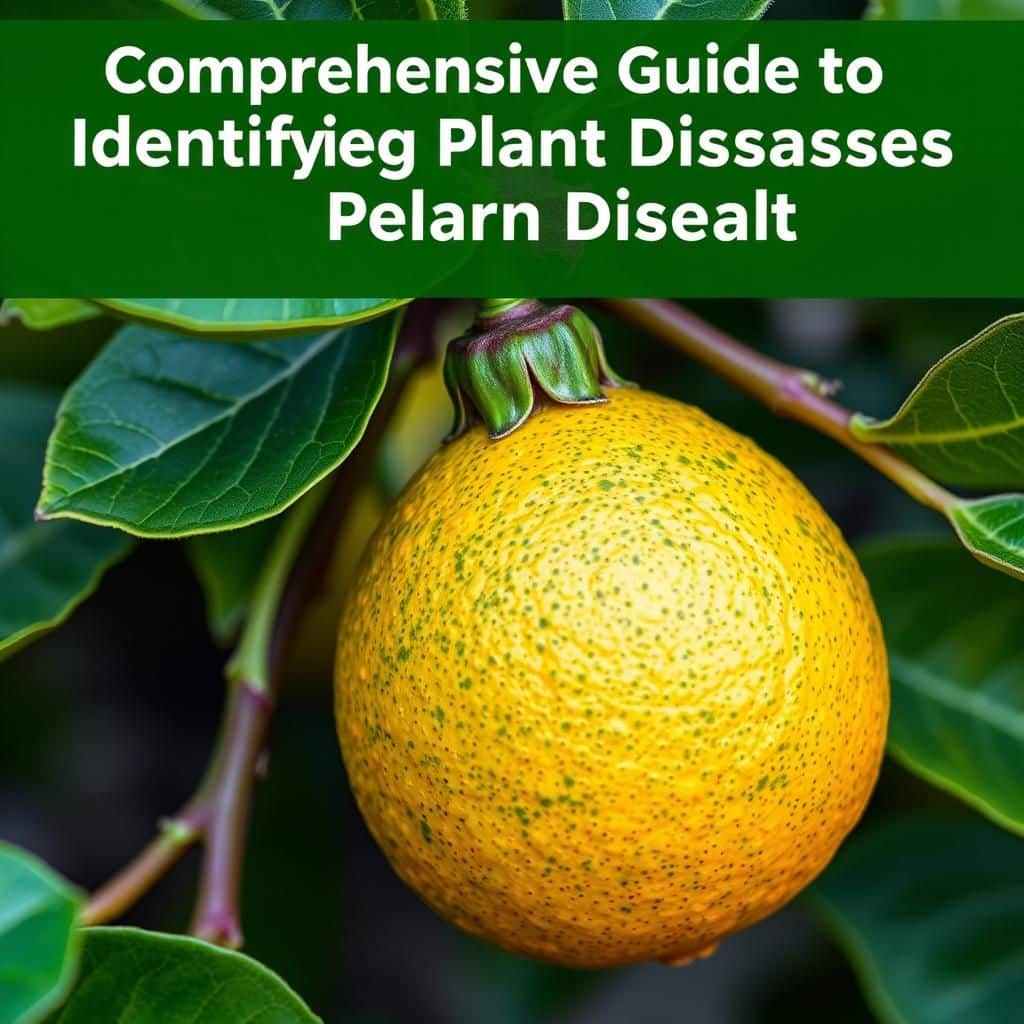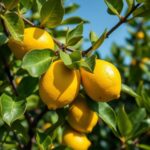Comprehensive Guide to Identifying Citrus Plant Diseases Pictures for Better Crop Health

Citrus plants are a vital component of agriculture, contributing significantly to global food supply and economy. However, their susceptibility to various diseases poses a serious threat to crop health and yield. This comprehensive guide aims to equip growers, enthusiasts, and agricultural professionals with essential knowledge on identifying common citrus plant diseases through detailed photographs. By recognizing symptoms early, informed decisions can be made regarding treatment and prevention, ultimately safeguarding the quality and productivity of citrus crops. Dive into this resource to enhance your understanding and protect your citrus plants from the challenges of disease infestations.
Citrus Plant Diseases: Identification Through Pictures
Citrus plants are susceptible to a variety of diseases that can severely affect their health and productivity. Identifying these diseases is crucial for effective management and treatment. Pictures of affected citrus plants can serve as valuable references, enabling growers to recognize symptoms such as leaf spots, cankers, and wilting. By understanding the visual indicators of diseases like Huanglongbing and Citrus Canker, farmers and gardening enthusiasts can take timely action to mitigate the impact on their crops. Utilizing a range of images illustrating these signs helps in diagnosing and explaining the complexities of citrus plant diseases.
Citrus Canker: Symptoms and Impact
Citrus canker is a bacterial disease characterized by the appearance of raised, water-soaked lesions on leaves, stems, and fruit. These lesions often turn brown and can cause premature leaf drop, fruit drop, and overall tree decline. The bacteria responsible for this disease can spread rapidly, particularly in humid conditions, posing a significant threat to citrus crops. Identifying citrus canker through photographs can assist growers in recognizing the distinctive blemishes on the plant surfaces, promoting early intervention to prevent widespread infection.
Huanglongbing (HLB): The Yellow Dragon Disease
Huanglongbing, also known as citrus greening, is one of the most devastating diseases affecting citrus trees worldwide. Affected plants display yellowing leaves, blotchy patterns, and asymmetrical fruit that may remain small and drop prematurely. The disease is often transmitted by the Asian citrus psyllid, making it essential to monitor for both the insect and the associated symptoms. Pictures of HLB-infected citrus plants illustrate these tell-tale signs, allowing growers to quickly assess the health of their crops and implement control measures efficiently.
Powdery Mildew: Identification Through Visual Signs
Powdery mildew is a fungal disease that manifests as a white, powdery coating on citrus leaves, which can hinder photosynthesis and overall plant vigor. In severe cases, it may also affect fruit, leading to reduced quality and quantity. Identifying powdery mildew through images is crucial for growers, as early detection enables them to apply fungicides or other management strategies promptly. Understanding the appearance of infected foliage in photographs can help distinguish powdery mildew from other potential issues affecting citrus plants.
See also:
Phytophthora Root Rot: Signs on Citrus Roots
Phytophthora root rot is a soil-borne disease that creates significant challenges for citrus growers. Symptoms include wilting, yellowing of leaves, and the presence of dark, mushy roots. A visual representation of these symptoms can help in early diagnosis, allowing growers to take necessary actions, such as improving drainage or applying appropriate fungicides. By examining pictures of infected root systems, farmers can better understand the destructive effects of this disease on their citrus crops.
Leaf Spot Diseases: Discovering Various Types
Leaf spot diseases caused by various fungal pathogens result in round, brown spots on citrus leaves, eventually leading to leaf drop and weakened plants. Photographs are invaluable for differentiating between the types of leaf spots, such as greasy spots and melanose, helping growers to pinpoint the specific cause of the symptoms. Recognizing these visual cues through images enables better disease management and targeted treatments.
| Disease | Symptoms | Visual Indicators |
|---|---|---|
| Citrus Canker | Raised lesions on leaves and fruit | Brown, water-soaked spots |
| Huanglongbing (HLB) | Yellowing leaves and blotchy fruit | Asymmetrical, small fruit |
| Powdery Mildew | White powdery coating on leaves | Visible fungal growth |
| Phytophthora Root Rot | Wilting and darkened roots | Mushy, brown root appearance |
| Leaf Spot Diseases | Brown spots on leaves | Various round leaf lesions |
Essential Techniques for Diagnosing Citrus Plant Diseases
Accurately diagnosing diseases in citrus plants is crucial for maintaining crop health and ensuring optimal yield. Utilizing a combination of visual inspections, photos of affected leaves, and understanding the symptoms associated with each disease can greatly enhance a grower's ability to manage and treat these issues effectively. Recognizing patterns in the foliage and fruit, along with environmental factors, lays a strong foundation for precise identification and intervention strategies.
Common Symptoms of Citrus Diseases
Recognizing common symptoms is the first step in diagnosing citrus plant diseases. Symptoms such as yellowing leaves, fruit drop, and stunted growth can indicate underlying issues. Each symptom may be linked to specific diseases, such as greening or canker, and understanding these correlations enables growers to take timely and appropriate actions to curb disease spread and mitigate damage.
Impact of Environmental Factors on Disease Development
Environmental factors play a significant role in the onset and severity of citrus plant diseases. Conditions such as humidity, temperature, and soil quality can either promote or inhibit the growth of pathogens. For example, high humidity can lead to an increased risk of fungal infections, while poor soil drainage may result in root rot. By monitoring these factors, growers can create more favorable conditions for healthy citrus crops.
See also:
Utilizing Photographic Resources for Identification
Utilizing photographic resources is essential to enhance disease identification skills among growers. Reference images that depict various citrus diseases can be found in agricultural guides and online databases. These resources help growers visually match their observations with specific diseases, making it easier to recognize patterns and symptoms. Access to a well-curated collection of disease pictures can significantly improve diagnostic accuracy.
Pest Identification and Its Relationship to Citrus Diseases
Understanding the relationship between pests and citrus diseases is critical for effective crop management. Many pests, such as aphids and whiteflies, are vectors for diseases like greening. Managing pest populations through integrated pest management (IPM) practices not only protects the fruit and foliage but also indirectly protects plants from secondary infections caused by pathogens that thrive in pest-damaged tissues.
Preventative Measures for Citrus Crop Health
Implementing preventative measures is an effective strategy to maintain citrus crop health. Practices such as proper irrigation, crop rotation, and the use of disease-resistant varieties can help reduce the prevalence of citrus diseases. Regular monitoring and early detection, combined with these preventative strategies, create a holistic approach to managing crop health and ensuring a successful yield.
Questions from Our Readers
What are common diseases affecting citrus plants?
The common diseases affecting citrus plants include citrus greening, citrus canker, and root rot. These diseases can significantly impact the health of the plants and their fruit production. Recognizing the symptoms early through pictures can help in controlling the spread of infections.
How can I identify citrus plant diseases from pictures?
To identify citrus plant diseases from pictures, carefully examine the symptoms displayed on the leaves, stems, and fruits. Look for signs like yellowing, spots, or abnormal growth patterns. Comparing your findings with online resources may aid in accurate diagnosis.
See also:
Where can I find reliable pictures of citrus plant diseases?
Reliable pictures of citrus plant diseases can be found on agricultural extension websites, research publications, and university resources. Official government agricultural sites also provide extensive databases of images that can help in identifying various diseases.
What preventive measures can be taken against citrus plant diseases?
Preventive measures against citrus plant diseases include maintaining proper soil health, ensuring adequate drainage, and practicing crop rotation. Regular inspections and the use of disease-resistant varieties can also enhance the resilience of citrus plants against infections.

If you want to read more articles like Comprehensive Guide to Identifying Citrus Plant Diseases Pictures for Better Crop Health, we recommend you check out our Gardeners category.
Leave a Reply
Related Articles